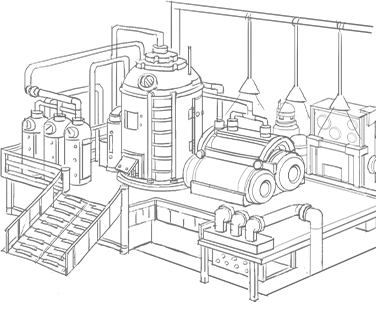
May. 21, 2025
A safety door switch is a vital device used in industrial settings to protect workers by monitoring the position of doors, gates, and other protective barriers. If a barrier is open, missing, or misaligned, the switch sends an immediate signal to stop the machine, reducing the risk of injury and ensuring a secure workspace. These switches are crucial in any facility involving mechanical systems.
Fundamentally, safety door switches ensure that machines operate only when protective doors and barriers are securely shut. Once an unsafe condition is detected, they halt the system instantly. This action protects both workers and equipment from potential harm.
Understanding the different types of safety door switches is essential when working in industrial environments. Here’s a brief overview:
1. Mechanical Safety Switches: These traditional switches operate through physical contact. When a door or guard moves, it triggers the switch. They’re straightforward and reliable, ideal for areas where basic protection is sufficient.
2. Magnetic Safety Switches: These use magnetic fields to monitor door positions without physical contact. Perfect for clean environments or delicate machinery, they prevent wear and contamination.
3. Non-Contact Safety Switches: Utilizing RFID or electromagnetic technology, these advanced switches offer precise monitoring without contact. Ideal for high-tech or hygiene-sensitive environments, they ensure accurate and reliable performance.
Each type serves specific purposes, so selecting the right one based on the environment and application is key to maximizing both safety and operational performance.
Safety door switches are widely used in sectors where machines and human interaction are frequent and hazardous. For example, in automotive production lines, these switches prevent robotic equipment from activating while maintenance work is being done, especially when access doors are open.
In packaging operations, they play a crucial role by stopping conveyor belts when guards are disengaged. This prevents workers from being injured by moving machinery. Their quick response not only ensures regulatory compliance but also promotes a proactive safety culture.
Proper installation of safety door switches is essential for maintaining industrial safety. Follow these steps to ensure effective setup:
1. Selecting the Right Switch: Choose a switch based on the machine type, environmental conditions, and required safety level. Whether it’s mechanical, magnetic, or non-contact, the right match is vital.
2. Ideal Placement: Install the switch where it can accurately detect door or guard status. It should be positioned to confirm full engagement of protective barriers.
3. Secure Wiring: All wiring should be firmly connected and follow industry standards. Use appropriate cables and connectors that can endure the environmental conditions of your facility.
4. Testing the System: After installation, conduct thorough testing under various conditions to confirm responsiveness and reliability before putting machinery back into operation.
A well-installed switch acts as the first layer of defense, ensuring both safety and extended equipment life.
Regular maintenance is key to ensuring safety door switches perform reliably. Set up scheduled checks to catch early signs of deterioration and maintain optimal safety levels.
Periodic Inspections: Include visual and functional checks in your routine maintenance to detect any physical or electrical faults early on.
Addressing Common Issues: Watch for loose connections, sensor contamination, or worn-out mechanical parts. Dirt or misalignment can lead to false readings or switch failure, especially in non-contact models.
Maintenance Log: Document all inspections, repairs, and replacements. A detailed log helps track performance trends and anticipate potential problems before they escalate.
Maintaining these switches not only ensures safety but also supports smooth and efficient operations across industrial applications.
Safety door switches are integral to any industrial safety system, ensuring machines operate only when it is completely safe. By halting operations in unsafe conditions, these switches protect workers and maintain safe working environments. For new engineers, understanding and implementing these devices is more than a compliance step—it’s a commitment to upholding workplace safety standards.
